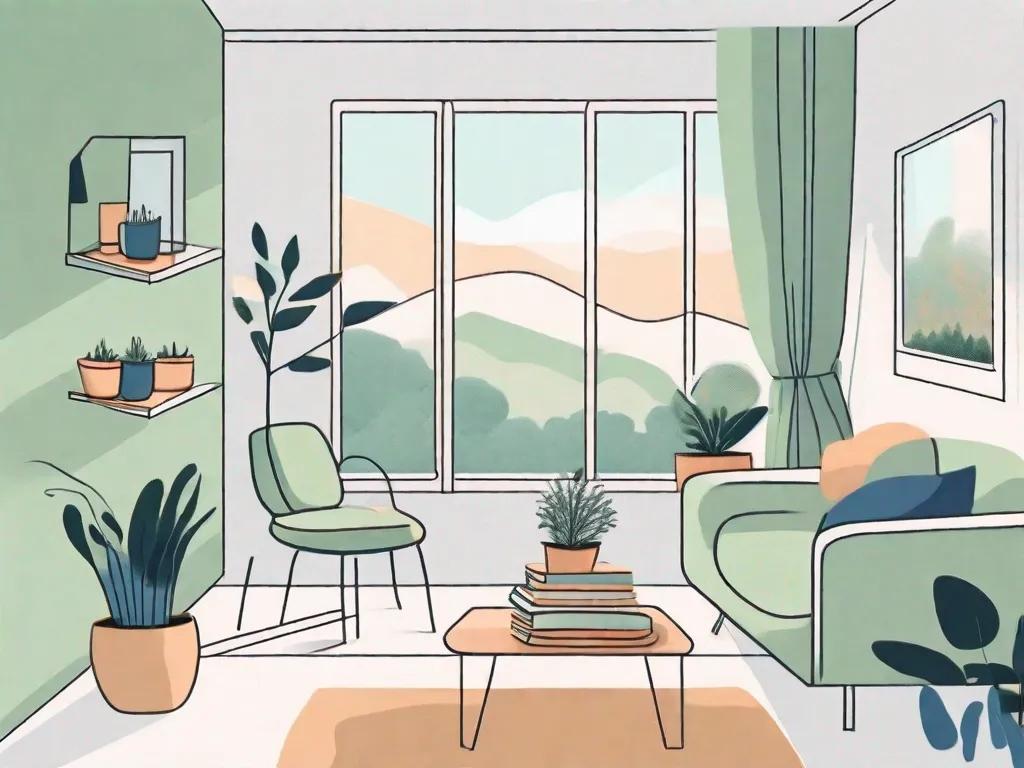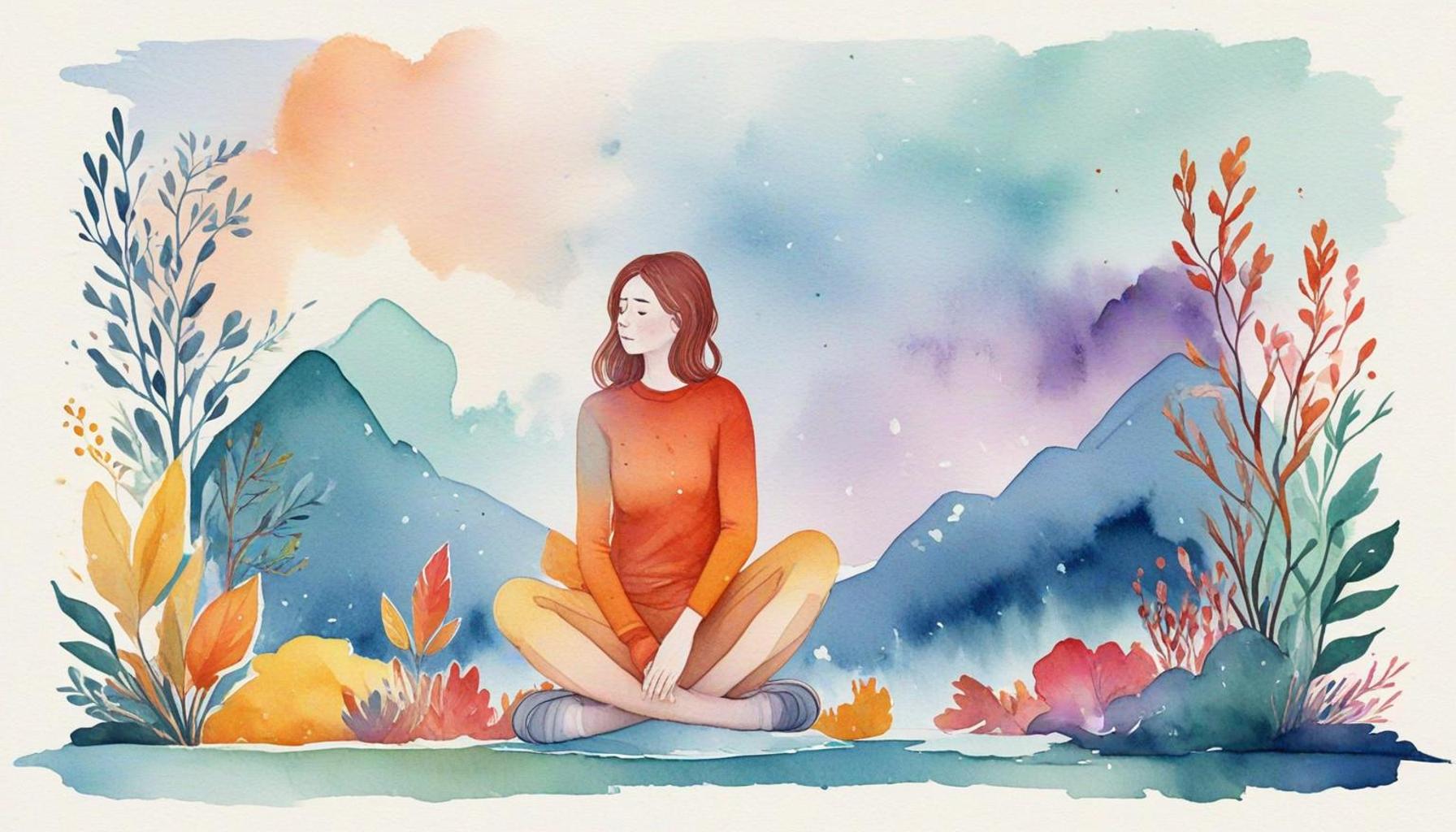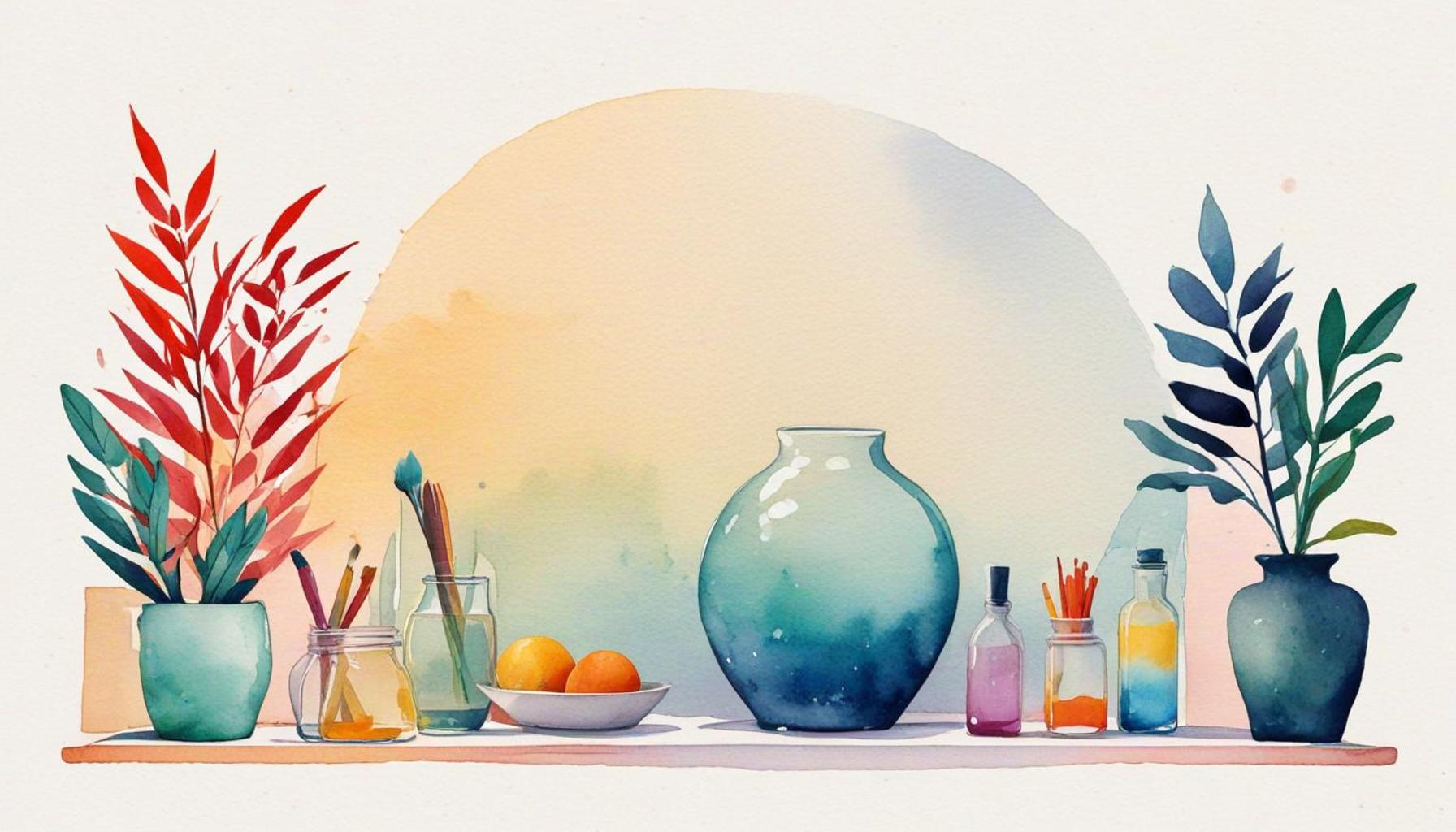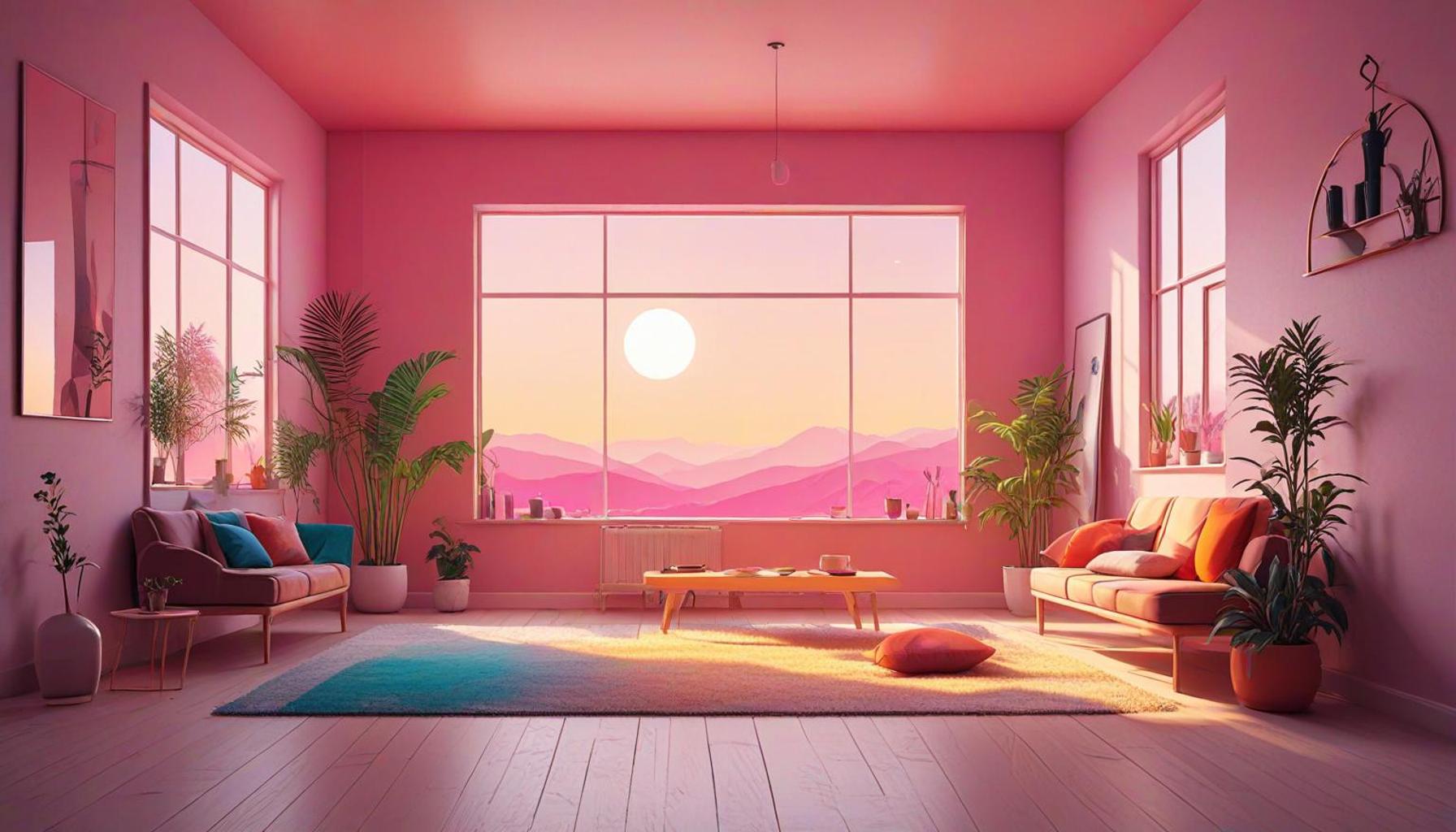Minimalism and Stress Reduction: Creating a Intentionally Calm Lifestyle

Embracing a Simpler Existence
In today’s fast-paced world, the quest for a calmer lifestyle often leads individuals to explore the principles of minimalism. The clutter of accumulating responsibilities, possessions, and deadlines can contribute to significant stress levels. Therefore, shifting towards a more intentional, minimalistic lifestyle not only enhances well-being but can also reduce anxiety. Many Americans find themselves inundated with choices and obligations, making it challenging to maintain a sense of peace. By adopting a minimalistic approach, one can reclaim not only their physical space but also their mental tranquility.
Understanding Minimalism
Minimalism is more than just decluttering physical spaces; it’s about creating a holistic approach to life. Here are a few key aspects:
- Intentional living: This concept encourages individuals to focus on what truly matters. It involves evaluating priorities and deciding what is essential for a fulfilling life, moving away from societal pressures to constantly acquire more.
- Decluttering: Removing excess items can free the mind. A study by the Personality and Social Psychology Bulletin indicates that higher levels of clutter in the home are linked to increased cortisol levels. Thus, simplifying one’s surroundings can lead to significant stress relief.
- Mindfulness: Engaging in mindfulness practices helps individuals remain present in the moment, which reduces anxiety and promotes peace. Techniques such as meditation or conscious breathing can enhance the experience of living simply.
Benefits of a Minimalist Approach
Adopting minimalism has shown to have various benefits for stress reduction:
- Enhanced focus: Less clutter leads to fewer distractions. For instance, students adopting minimalism report improved concentration and academic performance as they create cleaner, more organized study spaces.
- Improved mental clarity: Simplifying decisions reduces overwhelm. By narrowing down choices—from wardrobe selections to evening plans—individuals experience a decrease in decision fatigue, which can often stem from a consumer-driven society.
- Emotional freedom: Letting go of material attachments fosters a sense of liberation. Many people experience a transformative shift in their mindset as they realize that happiness is not directly correlated with possessions, leading to a deeper appreciation for experiences and relationships.
This article delves into how integrating minimalism into daily life can pave the way for intentional calmness. We’ll explore methods such as the 30-Day Minimalism Game or organizing techniques like Marie Kondo’s tidying method, both of which encourage critical assessment of one’s belongings. Real-life applications illustrate the transformative power of embracing simplicity amidst chaos, offering not just a practical guide but an inspiring invitation to create a life that prioritizes joy, clarity, and purpose.
DISCOVER MORE: Click here for practical organizing tips

Practical Steps Toward Minimalism
Transitioning to a minimalistic lifestyle requires intentional action and a commitment to redefining personal values. Here are some practical steps that can help individuals embark on this transformative journey:
- Start Small: The idea of minimalism can feel overwhelming at first, especially with the sheer volume of items many accumulate over the years. Begin the process by tackling one area of your home—be it a single drawer, your closet, or a room. Focus on removing items that no longer serve you or bring joy to your life. This way, the task feels manageable and achieves immediate results.
- Set Clear Goals: Establish specific, measurable objectives. For example, decide to donate or discard a set number of items each week. By creating a tangible goal, you can track your progress, which can be motivating. Tracking progress brings a sense of accomplishment and encourages continuous improvements toward a simpler lifestyle.
- Reevaluate Purchases: Before making new purchases, implement a 30-Day Rule. If you’re tempted to buy something, wait 30 days. If you still feel a strong need for the item after this period, then consider acquiring it. This practice can curb impulsive buying and help reinforce the habit of prioritizing what truly adds value to your life.
- Embrace Digital Minimalism: In a tech-driven age, digital clutter is just as burdensome as physical clutter. Organize your digital files, unsubscribe from unnecessary emails, and streamline social media accounts. Aim to keep only what is essential and meaningful, as this can significantly reduce online distractions and emotional stress associated with an overwhelming digital landscape.
- Cultivate Mindfulness: As you declutter, engage in mindfulness practices that enhance your ability to stay present and appreciative of your surroundings. Mindful activities, such as meditation or yoga, can help ground your thoughts and foster a deeper connection to the concept of living simply. This alignment can deepen the impact of minimalism and enhance psychological well-being.
By implementing these practical steps, individuals can gradually cultivate an intentionally calm lifestyle grounded in minimalism. The path to simplification not only involves physical decluttering but also a profound psychological shift that promotes tranquility. It is essential to recognize that this journey is personal and varies from one individual to another. Greater clarity and reduced stress await those willing to embrace the principles of living with less. As we proceed through this article, we will discuss specific methods and real-life experiences that inspire individuals to foster a minimalist mindset in every aspect of life, ultimately leading to a more harmonious existence.
| Advantage | Description |
|---|---|
| Reduced Clutter | Adopting a minimalistic approach helps eliminate unnecessary items in your life, reducing visual chaos and facilitating a clearer mind. |
| Enhanced Mindfulness | Focusing on fewer possessions promotes mindfulness practices that foster stress relief, creating space for reflection and creativity. |
| Improved Financial Freedom | Living minimally often translates to financial savings, as reducing consumption leads to less spending and more sustainable choices. |
| Increased Focus | A simplified environment can significantly enhance focus and productivity, enabling you to concentrate on tasks that truly matter. |
By exploring these advantages, it’s evident how minimalism plays a crucial role in stress reduction. Each benefit interconnects to create a lifestyle that not only values simplicity but also prioritizes mental well-being. As you navigate through life with fewer distractions, you may find an enriching peace that fosters a more intentional and fulfilling way of living.
DISCOVER MORE: Click here to learn how decluttering can change your life
Building a Supportive Environment
Creating a minimalist and intentionally calm lifestyle extends beyond personal habits and habits; it involves fostering an environment that reinforces those principles. When our surroundings reflect our values, the journey towards simplification becomes much more attainable. Here are several effective strategies for enhancing your living and working spaces to support a minimalist mindset:
- Designate Clutter-Free Zones: Identify certain areas in your home that are specifically maintained as clutter-free spaces. These zones can serve as sanctuaries where you can relax and unwind. By preserving these areas for meditation, reading, or simply enjoying calmness, you can create pockets of tranquility amidst daily chaos.
- Choose Multi-Functional Items: Invest in multi-functional furniture that serves various purposes without overwhelming your space. For instance, a coffee table that also serves as storage or a bed with built-in drawers can help eliminate excess clutter while maximizing utility. This strategy reduces the need for unnecessary items, paving the way for a cleaner, more harmonious living environment.
- Utilize Natural Elements: Incorporating elements of nature into your surroundings can bolster a sense of peace. Consider adding indoor plants, which purify the air and enhance the aesthetic of your home. Additionally, natural materials such as wood and stone can create a calming atmosphere. Research suggests that exposure to nature can lower stress levels and improve overall well-being, making it a smart addition to any minimalist lifestyle.
- Create an Aesthetic Alignment: Pay attention to colors, textures, and styles in your environment. Adopting a cohesive aesthetic that resonates with simplicity can alleviate visual clutter and create a serene atmosphere. Choose a calming color palette, such as soft neutrals or muted tones, to encourage relaxation and focus. This alignment can subconsciously promote a peaceful state of mind.
- Limit Visual Distractions: In addition to physical clutter, limiting visual distractions can enhance mindfulness. Clear surfaces of unnecessary items, and remove or hide electronics when not in use. By implementing fewer decorations or integrating design elements with a minimalist ethos, you can create an environment that encourages focus and stress reduction.
By actively designing an environment that supports minimalism, individuals can reinforce their commitment to creating a less stressful lifestyle. Each modification not only contributes to a harmonious living space but also serves as a daily reminder of why these changes are essential. When our environment reflects simplicity and intention, it enhances personal resilience against the stressors of daily life.
Furthermore, engaging family members or housemates in this journey can lead to a communal understanding of the values associated with minimalism. Encourage open dialogue about individual goals and collectively implement changes that cultivate harmony within the shared living space. Together, these adjustments can foster a culture of simplicity and intention that nurtures everyone involved.
As we delve deeper into the realm of minimalism, we will explore the impacts on mental well-being, specifically how embodying simplicity can lead to increased productivity and fulfillment.
DISCOVER MORE: Click here to learn how to manage your time better
Conclusion: Embracing Minimalism for a Tranquil Existence
As we reflect on the transformative journey of minimalism and its role in stress reduction, it becomes clear that adopting a simpler lifestyle is not merely about decluttering our physical spaces. It is a profound commitment to fostering an environment and mindset that prioritizes calmness and intentionality. By embracing minimalist principles, individuals can pave the way for a life that is not only more organized but also more fulfilling.
The strategies discussed throughout this article—designating clutter-free zones, choosing multi-functional items, incorporating natural elements, and limiting visual distractions—serve as actionable steps toward reducing overwhelm and cultivating serenity. Through these conscious choices, we create sanctuaries that reflect our desire for tranquility. Additionally, inviting family members or housemates into this journey can amplify the benefits by fostering communal understanding and shared purpose towards living simply.
Moreover, minimalism encourages us to reevaluate our relationship with material possessions and the impact they have on our mental well-being. By focusing on what truly adds value to our lives, we free ourselves from the weight of unnecessary burdens and distractions. The result? A greater sense of clarity, enhanced productivity, and improved overall happiness.
In pursuing a minimalist lifestyle, we open ourselves to endless possibilities for personal growth and mindfulness. Let this be an invitation to begin your exploration of simple living, allowing yourself to discover the profound benefits of embracing a calm lifestyle. The path towards minimalism is not a destination, but rather a journey—a journey that can lead us to a more intentional and peaceful way of being.


